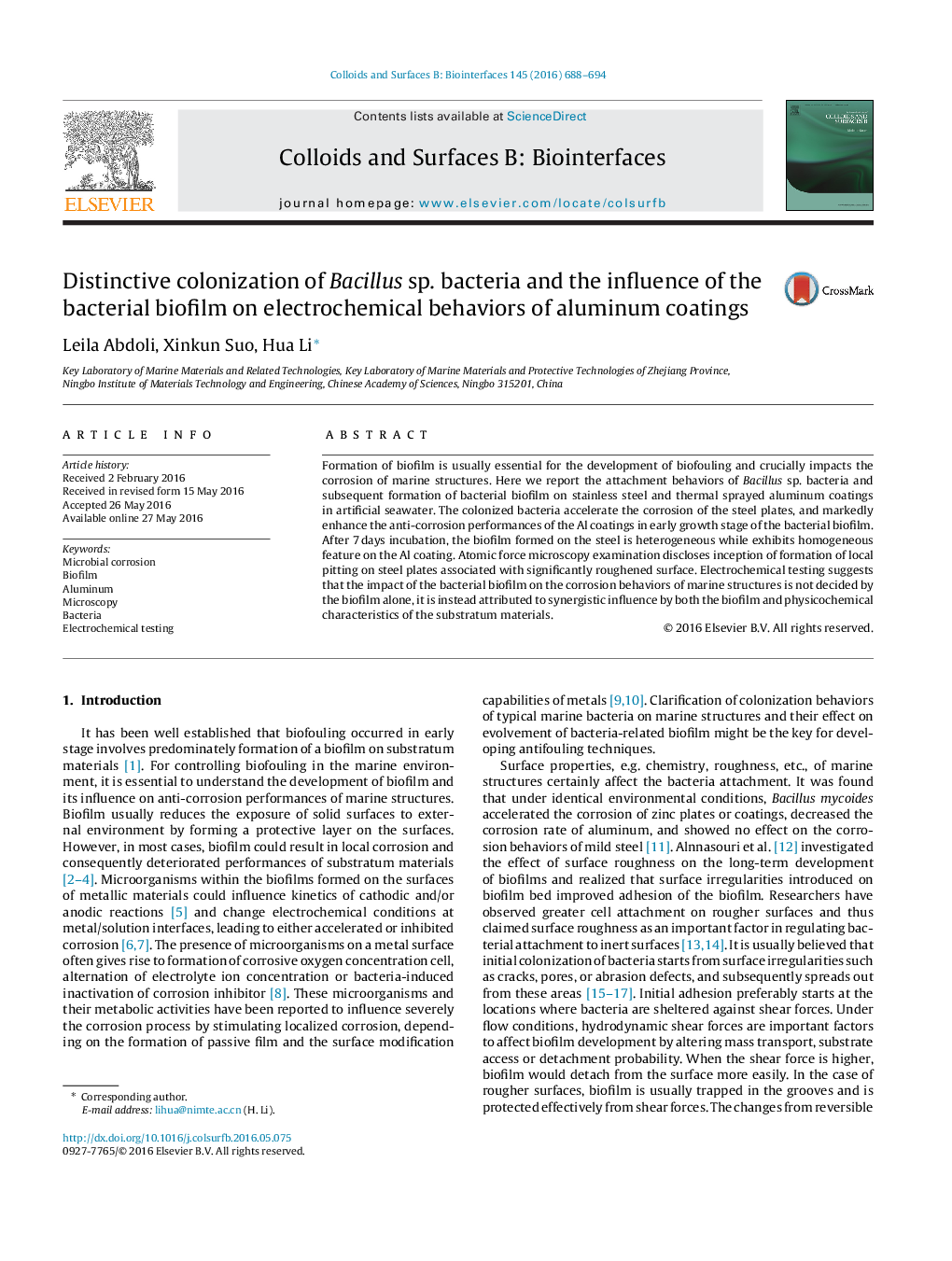| Article ID | Journal | Published Year | Pages | File Type |
|---|---|---|---|---|
| 598995 | Colloids and Surfaces B: Biointerfaces | 2016 | 7 Pages |
•Biocorrosion behavior of arc sprayed Al coating and stainless steel was studied.•Surface features of materials and biofilm synergistically regulate biocorrosion.•Bacterial biofilm enhances corrosion resistance of the Al coating in early stages.•Rough surface facilitates colonization of bacteria and formation of biofilm.
Formation of biofilm is usually essential for the development of biofouling and crucially impacts the corrosion of marine structures. Here we report the attachment behaviors of Bacillus sp. bacteria and subsequent formation of bacterial biofilm on stainless steel and thermal sprayed aluminum coatings in artificial seawater. The colonized bacteria accelerate the corrosion of the steel plates, and markedly enhance the anti-corrosion performances of the Al coatings in early growth stage of the bacterial biofilm. After 7 days incubation, the biofilm formed on the steel is heterogeneous while exhibits homogeneous feature on the Al coating. Atomic force microscopy examination discloses inception of formation of local pitting on steel plates associated with significantly roughened surface. Electrochemical testing suggests that the impact of the bacterial biofilm on the corrosion behaviors of marine structures is not decided by the biofilm alone, it is instead attributed to synergistic influence by both the biofilm and physicochemical characteristics of the substratum materials.
Graphical abstractAFM topographical images of bacterial biofilm on stainless steel and biofilm-induced pitting.Figure optionsDownload full-size imageDownload as PowerPoint slide
